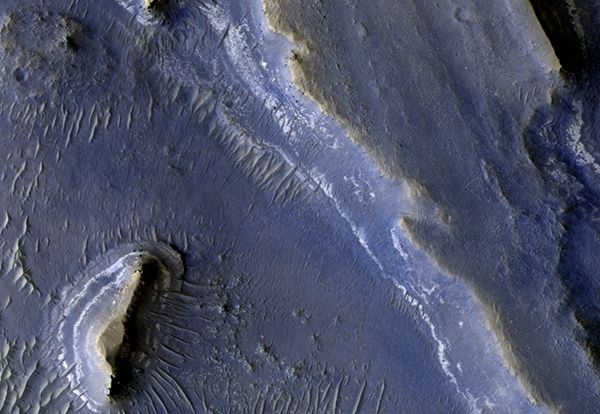Next year, NASA plans to launch a new Mars rover to search for signs of ancient life on the Red Planet. A new study shows that the rover’s Jezero crater landing site is home to deposits of hydrated silica, a mineral that just happens to be particularly good at preserving biosignatures.
“Using a technique we developed that helps us find rare, hard-to-detect mineral phases in data taken from orbiting spacecraft, we found two outcrops of hydrated silica within Jezero crater,” said Jesse Tarnas, a Ph.D. student at Brown University and the study’s lead author. “We know from Earth that this mineral phase is exceptional at preserving microfossils and other biosignatures, so that makes these outcrops exciting targets for the rover to explore.”
The research is published in Geophysical Research Letters.
NASA announced late last year that its Mars 2020 rover would be headed to Jezero, which appears to have been home to an ancient lake. The star attraction at Jezero is a large delta deposit formed by ancient rivers that fed the lake. The delta would have concentrated a wealth of material from a vast watershed. Deltas on Earth are known to be good at preserving signs of life. Adding hydrated silica to the mix at Jezero increases that preservation potential, the researchers say. One of the silica deposits was found on the edge of the delta at low elevation. It’s possible that the minerals formed in place and represent the bottom layer of the delta deposit, which is a great scenario for preserving signs of life.
Read more at Brown University
Image: A false-color image of Jezero crater shows the edge of an ancient river delta, where researchers have spied hydrated silica. Credit: NASA


